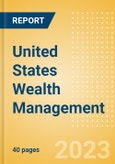60.9% of the US population were classed as affluent in 2022. This proportion recorded an average annual growth rate (AAGR) of 3.2% over 2017-22e. The generally slowing growth of the affluent population in the late 2010s - which is set to continue throughout the 2020s - suggests increasing inequality and immobility between wealth bands. Low growth of the affluent population is forecast to remain a long-term trend. However, higher wealth bands will register growth upwards of 1 percentage point higher than the affluent average.
Scope
- 2023 has been unpredictable for investors, plagued by rate hikes, recessionary threats, and a banking crisis. Despite this, the S&P 500 gained over 6% for the year to May.
- Mass affluent and emerging affluent investors have similar holdings profiles, with just a slight rise in the number holding equity and mutual funds in the mass affluent group.
- Tax efficiency is the key driver for offshoring wealth among the emerging affluent, as cited by 25% of respondents.
Reasons to Buy
- Make strategic decisions using top-level historic and forecast data on the US wealth industry.
- Identify the most promising client segment by analyzing the penetration of affluent individuals.
- Receive detailed insights into retail liquid asset holdings in the US.
- Understand the changing market and competitive dynamics by learning about new competitors and recent deals in the wealth space.
- Discover key digital disruptors in the country's wealth market.
Table of Contents
- The US Market
- Investor Insight
- Resident Savings and Investments
- Deals
- Digital Disruptors
- Appendix
Companies Mentioned (Partial List)
A selection of companies mentioned in this report includes, but is not limited to:
- Clayton
- Dubilier & Rice LLC
- Figure Technologies
- Focus Financial Partners
- LPL Financial Holdings
- Microsoft
- Stone Point








